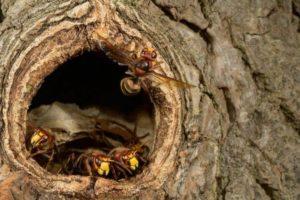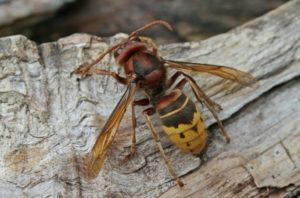When wasps wake up: features of wintering insects
With the advent of heat, people take off their outer clothing, flowers bloom, and insects wake up and begin to do their business. And it's true, have you ever wondered what wasps do in winter?
Content
Wasp lifestyle features
Wasps begin their activity with the arrival of stable heat. Young females are the first to wake up, the purpose of which is to find a place to live.
Throughout the warm season, wasps actively build housing and contribute to the cultivation of the younger generation. They have their own roles and responsibilities.
In autumn, the temperature begins to drop and the wasps fly out of their nests in search of a place to winter. It is especially important to find a comfortable place for fertilized females that will become successors of the genus in the spring.
Features of wintering wasps
Wasps build their homes near humans, often in sheds, under balconies, or in attics. And many experts advise removing them in the winter, for safety reasons.
Where do wasps winter in nature?
In autumn, wasps begin to actively feed on stocks that will be slowly used to sustain life during the cold season. The main requirement for a wintering place is the absence of sudden temperature changes and protection from dangers.
They find a secluded place, bend their paws and fall into a state close to hibernation. Sleeping areas are:
- exfoliated bark;
- cracks in wood;
- heaps of foliage;
- compost pits.
Drivers know what antifreeze is. These are special liquids that do not change their state of aggregation at low temperatures. People say "non-freezing". In wasps, the body produces a special substance of the same spectrum of action.
How can wasps not survive the winter
It happens that in the spring, when cleaning the site, gardeners meet the corpses of yellow-black insects. Wasps sometimes simply do not survive the cold. There are several reasons for this.
- Pests that lay larvae or feed.
- Birds that eat wasps in cold weather. Then there are no traces left.
- Severe cold that the insect simply does not tolerate. Often this is due to the lack of snow cover.
When the wasps wake up
The first to wake up are the social wasps, who will build a colony. Uterus forms several tiers of its nest and quickly lays its first offspring.
Hornets wake up later than other representatives. They often return to their old places and settle down there again.
The optimum temperature for the appearance of the first, buzzing individuals after winter is from +10 degrees, with steady warming. Then they have enough work and food, because everything blooms.
Conclusion
Winter is not the most comfortable time of the year for Hymenoptera, as well as for many other insects. Wasps find secluded places for wintering and spend the whole season there, until the temperature is stable.
https://youtu.be/07YuVw5hkFo
Previous
